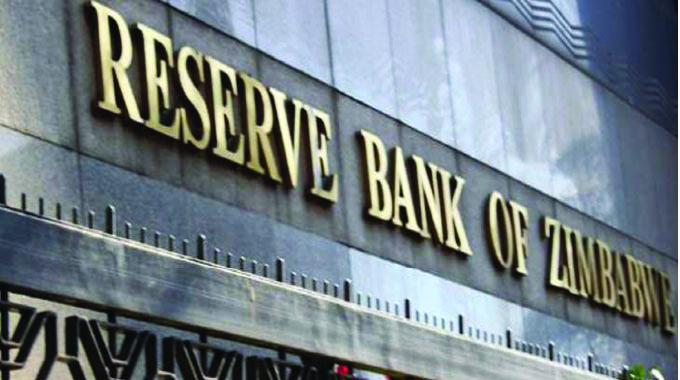Exchange rates seen converging as Govt policy measures take root

Business Reporter
Economic analysts see the official and black market exchange rates converging soon after premiums fell significantly since the Reserve Bank of Zimbabwe (RBZ) and fiscal authorities introduced policy measures to stabilise the exchange rate and taming runaway inflation.
Inflation and the exchange rate have been largely stable since the Government intensified interventions to squeeze excess liquidity from the market, with the local currency appreciating against the US dollar on the black market while inflation is cooling. Some of the measures included the introduction of gold coins as a store of value and alternative to the US dollar and a review of all Government supply contracts priced using parallel market exchange rates, which contributed to the creation of excess liquidity.
The central bank also hiked the bank policy rate, which determines minimum bank lending rates, from 80 to 200 percent to discourage speculative borrowing for purposes of dabbling in illegal currency trading and exploiting arbitrage opportunities on the equities market.
The foreign exchange rate premium has significantly declined from 140 percent in May 2022 to between 5 percent and 15 percent, Dr John Mangudya, central bank governor and chairman of the Monetary Policy Committee said on Tuesday.
Dr Mangudya said the gap between the interbank rate, which stood at $621,6 against the greenback yesterday, and the black market rate, traded between $700 and $750 has significantly narrowed, “which is consistent with regional and international norms.”
“We are moving towards convergence or near convergence and this should ensure the stability of prices and the exchange rate and maintain currency value,” Carlos Tadya, the Harare-based economist, told The Herald Finance & Business.
Dr Mangudya said “this positive development on the exchange rate front is envisaged to go a long way in eliminating arbitrage opportunities, which were fueling forward pricing models; hence fomenting adverse inflation and exchange rate expectations.”
The appreciation of the local currency against US dollars has resulted in greater acceptance of the Zimbabwe dollar. “The situation has turned around; you cannot just imagine that about two months ago, we were not accepting the Zimbabwe dollar or in instances were accepted it, the prices were ridiculous because we were using forward costing models,” Juliet Ngena, a grocery shop owner in the Harare CBD said.
The stability in the exchange rate has also seen prices of some commodities declining.
From manufacturers, wholesalers to retailers, stocks have been piling up due to low demand as most of the commodities had been priced using forward costing models.
Amid rising inflation, most businesses were using forward pricing models to hedge against the depreciation of the local unit.
With the now prevailing economic stability, as evidenced by the declining monthly inflation rate and retreating of the black market exchange rate, some manufacturers and retailers are cutting prices in a bid to clear overstocked warehouses and spur sales. The MPC expressed satisfaction with the positive impact of the recent policy measures, which have resulted in significant fall of monthly inflation from 12,4 percent in August 2022 to 3,47 percent in September 2022. The decline in month-on-month inflation has, in turn, resulted in the decline in annual inflation to 280,4 percent in September 2022 from 285,1 percent in August.
Harare-based economist Victor Bhoroma said there has to be liberalisation of the foreign exchange market to allow banks to be “matchmakers” and allocators of foreign currency in the market.
“The central bank’s primary role is to give oversight and regulate while focusing on keeping inflation low,” said Mr Bhoroma while “interest rates have to be always aligned to inflation to discourage speculative borrowing and artificial demand for forex.”
The MPC maintained the bank policy and medium-term lending rates at 200 percent and 100 percent, respectively, “until durable stability, measured by a sustained decline in month-on-month inflation to desired levels of less than 5 percent is attained.”
“The RBZ should exercise utmost diligence so that the currency manipulators do not resurrect and keep money supply in the market under check,” economic analyst Dr Langton Mabhanga said. The gold coins have helped to mop up excess liquidity on the market “as well as a demand agent for Zimbabwe dollar currency and a deflector of hot money that could have inflated US dollar value,” Mr Mabhanga said.
The gold coins were introduced in July this year and pieces worth $9 billion have been sold so far.
Dr Mabhanga said the Treasury must continue scrutinizing all tender value and “drill in value for money procurement strategies” and continue to strengthen willing buyer will seller forex trading.











Comments